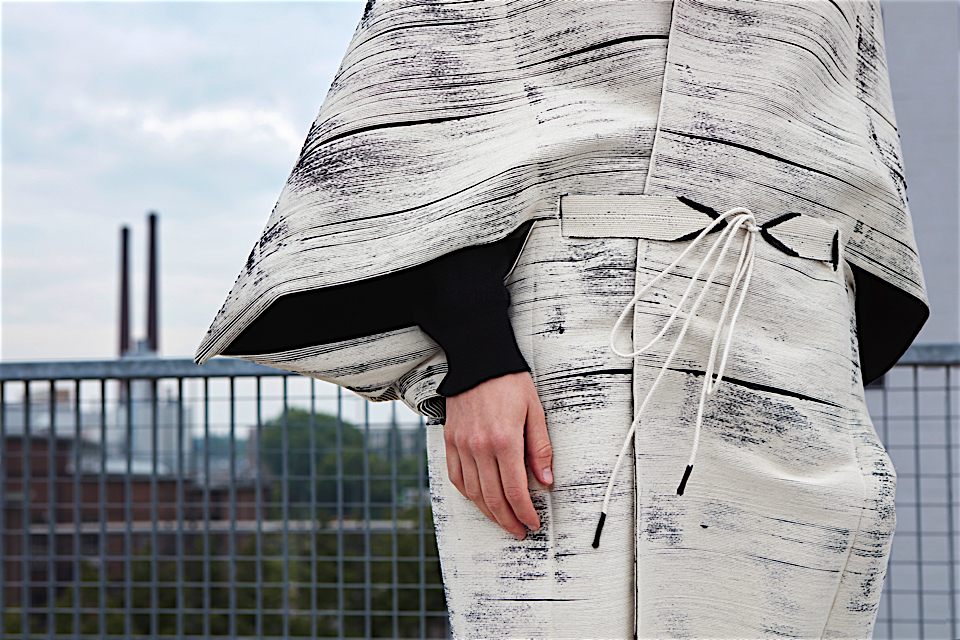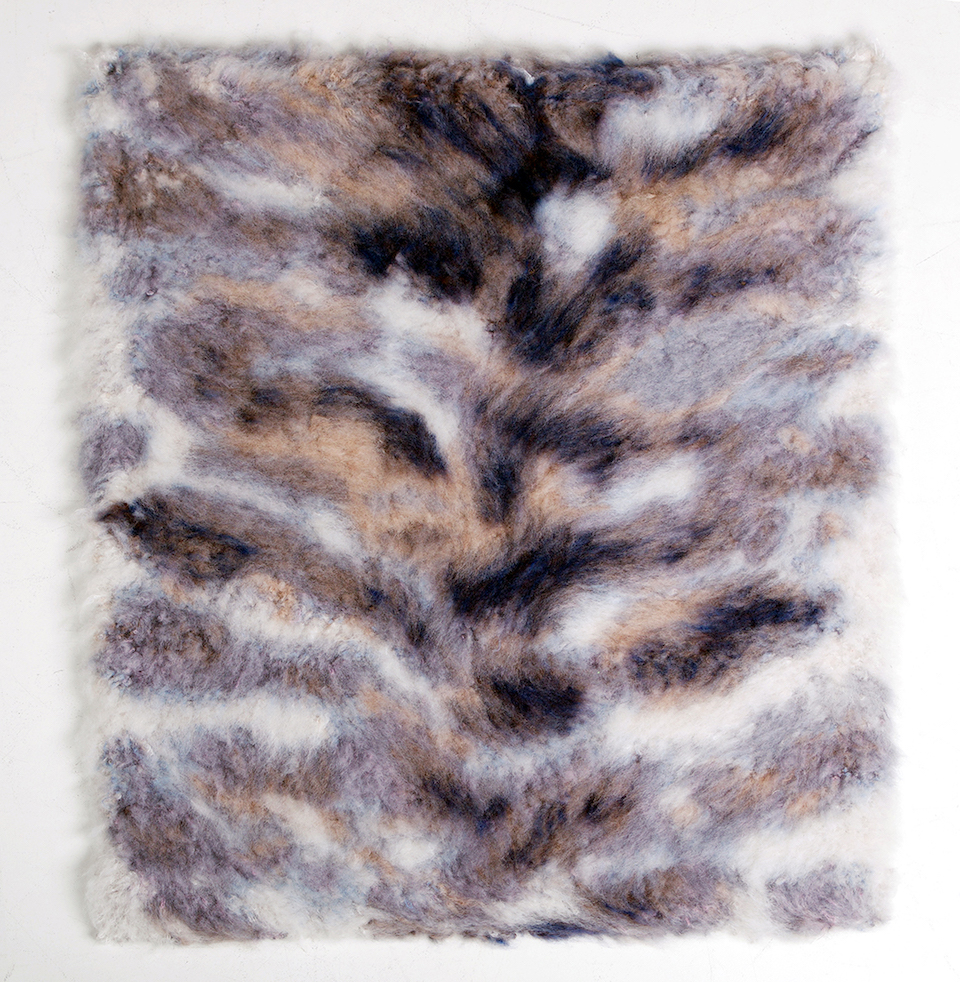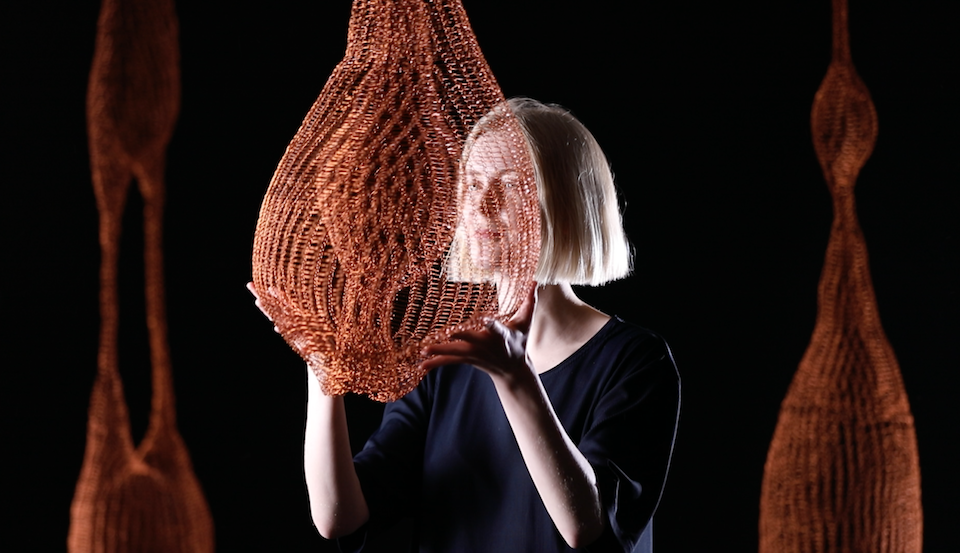TALKING TEXTILES
Waxman Textile Prize – Winners #2017

wendy andreu
Lidewij Edelkoort and Philip Fimmano are pleased to announce that Wendy Andreu from Design Academy Eindhoven is the winner of the 2017 Dorothy Waxman International Textile Design Prize!
Her project impressed the jury with its neither woven nor knitted essence. Called ‘Regen (which means “rain” in Dutch), her textile is double-sided with water-repellent latex on one side, and cotton rope on the other. Where the dark latex seeps between the light rope it creates shading and textural detail that make each item unique. Wendy’s accessories and garments are made by coiling the rope around a laser cut steel mold. Generously supported by Mohawk Group, Wendy also receives a prize of US $5,000.
Presided over by Dorothy Waxman, the 2017 jury was comprised of Royce Epstein (Mohawk Group), Helen Oji (Eileen Fisher), Paul Makovsky (Metropolis Magazine), Chloe Sos (Edelkoort Inc.) and designers Lori Weitzner and Sherri Donghia. They decided to give a Special Jury’s Mention to Hanna-Kaisa Korolainen (University of Arts, Design and Architecture) and the duo Pawel Lasota & Magda Mojsiejuk (School of Form, Poznan).

Design and style by Hanna-Kaisa Korolainen
Also giving reference to the rain, Hanna-Kaisa’s The House of Rain is a sumptuously-soft range of rugs and cushions in mohair that are a cosy antidote to today’s difficult times. Hanna-Kaisa wanted to see how sketches made with water could be developed into textiles and how sources of inspiration influence the process and the outcome.
Her textile’s surface resembles thick, dense fur where original motifs are blurred and almost disappear, because of the richness of the material. When brushed open, the mohair becomes organic and almost animal-like, it even feels warm. Its three-dimensional surface seems active as if it was alive and reaching out.

Knotty // Flexible-copper-structures-knitted-by-robot@Michał-Reich
Pawel Lasota & Magda Mojsiejuk also received a special mention because their project previews a future when technology and textiles will become one and the same, knitting everything from lamps to bridges. Knotty is a project that translates the knitting technique into the language and movement of a robot.
The resulting series of material copper wire structures displays the capabilities of this technology. Combining the properties of knitted fabric (constructing the material from a single line) with the properties of copper wire enables the structures to sense, react and produce sound. Let’s imagine a future where our surroundings constantly detect our presence and react to it.

